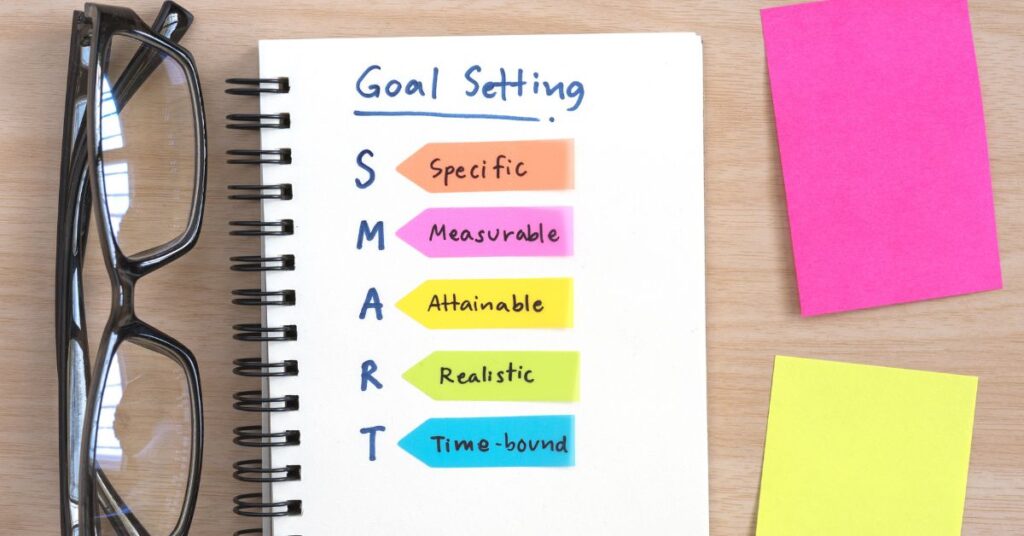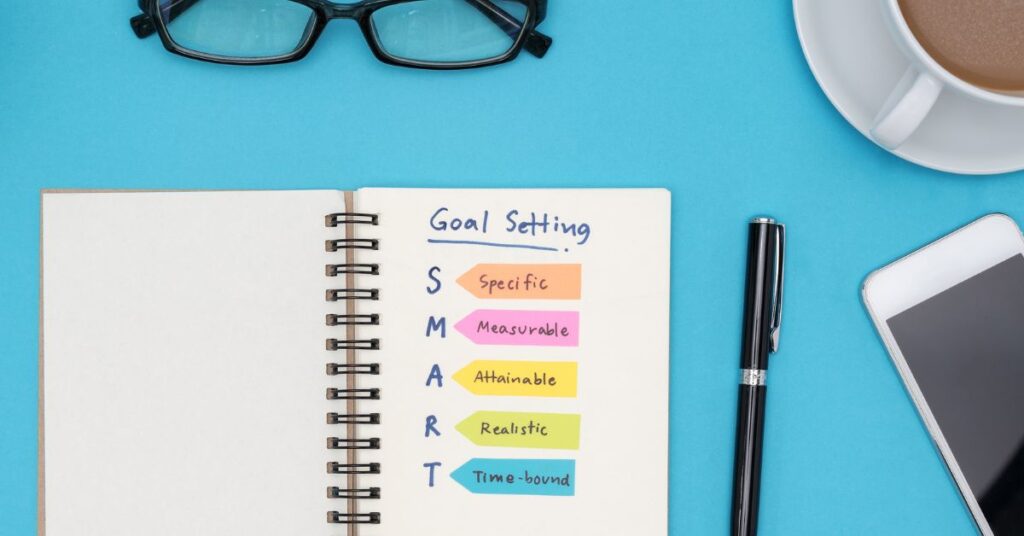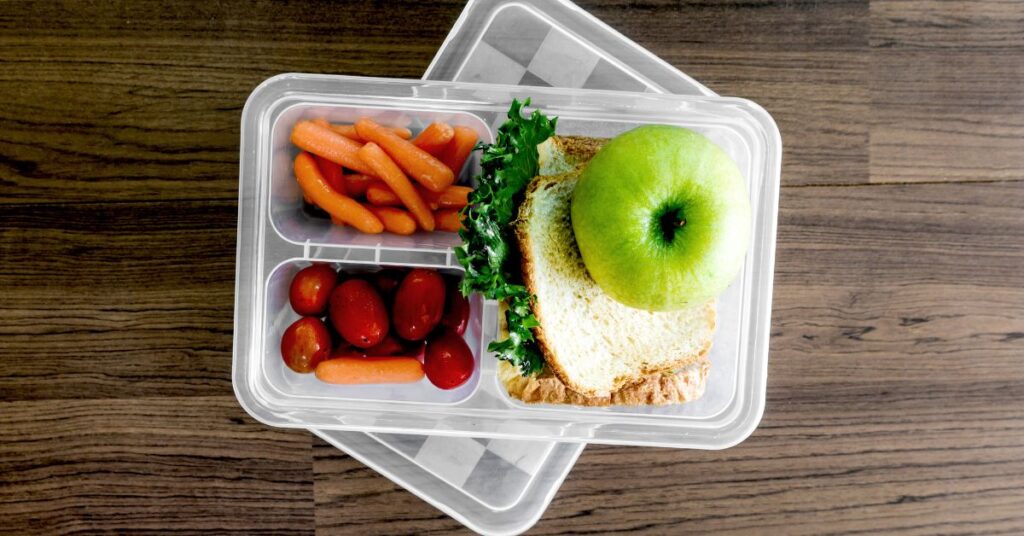
Smart Goals for Smart Weight Loss
Losing weight is one of the top goals people have as the New Year approaches, yet it is one of the most difficult to achieve. There are a multitude of reasons why it is hard for most people to lose weight and keep it off, but one of the most common mistakes is that people “jump right in” without having a systematic plan or creating specific goals to get them there. So let’s start at the beginning… What is a goal? The word “goal” is often overused and most people might not fully understand its intended meaning and why we need to set goals. Hence, I am going to explain how to set SMART goals for your future weight loss journey.
Why do goals matter for weight loss?
Research by a psychologist and career coach at Dominican University of California shows that there’s a direct correlation between setting goals and achieving success. If your goals are clearly defined, it will help trigger new behaviors and help you focus on what’s important to you. The key to doing this successfully is to create SMART goals to keep you on track with your weight loss efforts. Of course, it’s not just about setting goals, it’s also about achieving them. Let’s first look at why goals matter and why creating SMART goals will help set you up for success (Whitehead, 2020).

Goals: What are they and what are they not?
Before setting goals you need to know what a goal is. A goal is something you want to achieve. It’s the desired result you are planning for and are committed to achieving.
Put simply, a goal is a dream with a deadline.
A goal can also be seen as your vision for the future. Goals should be the result of careful consideration of a personal vision statement and things you want to achieve. They are typically time sensitive and can be large in nature. If these goals are larger in nature, they can be broken down into smaller chunks with deadlines in order for them to feel more achievable. A goal is not an objective, a resolution or a mission statement.
An objective is the steps you take to reach a goal while a goal is what you want to achieve. For example, “I want to increase my physical fitness in order to manage my weight” is a goal while “I will work out with my personal trainer at the gym to increase my physical fitness” is the objective.
A goal is something you want to achieve. It’s the desired result you are planning for and are committed to achieving.
Resolutions are typically temporary with short-term gratification to do or not to do something, while a goal is again, what you are looking to achieve. A mission on the other hand creates a clear and focused direction to follow. It’s a statement of purpose from which an individual follows. On the other hand, a goal has a specific aim you work towards.

What are SMART goals?
A SMART goal is a powerful goal-setting tool that helps create a clear plan to follow. Each letter in the acronym for SMART goals stands for a quality your goals should have:
- Specific
- Measurable
- Attainable
- Relevant
- Timely
Let’s take a closer look at each of these steps.

1. Specific Goals for Weight Loss
Make your healthy weight loss goals as specific as possible—that way, you are clear on what it means to accomplish the goal.
Broad or vague statements, like “I want to eat better,” make it more challenging for you to track your weight loss progress since it’s so broad. It’s hard to set this as your goal one week and look back the next week in order to see if you were able to accomplish it—eating “better” is so broad that it doesn’t mean much.
Instead, try to choose more specific accomplishments when it comes to your weight loss program. For example, you could change “I want to eat better” to a more specific eating milestone such as “I want to eat more fruits and yogurt for breakfast two days a week.” That’s a super specific and achievable goal.
Instead, try to choose more specific accomplishments when it comes to your weight loss program.
Even though it’s common to want to have a weight loss goal when you start your weight management journey, it can be helpful to focus your goals on specific behaviors instead of a specific body weight as a goal, such as:
- Eating two servings of fruit each day
- Walking or light exercise 15 minutes each afternoon
- Going to bed at 10:30 pm and waking up at 6:30 am every day
- Practicing ten minutes of meditation every day

2. Measurable Weight Loss Goals
Setting goals you can measure helps you track your overall progress toward your goal weight. For example, if one of your short-term goals is to eat more whole grains, you could set a new goal of adding one serving of whole grains to each meal. That’s a reasonable amount that is easy to achieve.
Doing so allows you to look back on your day and it will be easy to measure whether or not you were able to meet that goal. This way you can track when you were able to achieve that goal throughout the week.
Aim for goals that have specific time-bound outcomes you can track…
If you don’t have something concrete to measure on a weekly basis, it will be challenging to know whether you’ve reached your weight loss smart goals.
For example, people set a weight loss goal so that they gain more energy, but that is not measurable.
Aim for goals that have specific time-bound outcomes you can track like:
- A number change in lab work
- Doing a particular exercise or physical activity a certain number of times a week
- Adding one fruit to your day, five times a week

3. Achievable Weight Loss Goals
It’s important to be honest and realistic when creating your goals, short-term and long-term. This will help set you up for success in your weight loss journey. If your goals for weight loss are unrealistic, they will be hard to achieve and you will be less likely to stick with something that is difficult or hard to accomplish.
Small changes that lead to long-term success are better than making big changes that are hard to stick to. If you don’t exercise regularly now, it will be hard to set a goal of walking for an hour every day of the week. Instead, meet yourself where you are now. Maybe set a behavioral goal of walking for 30 minutes two times a week which may be a target you are more likely to hit and be proud of. You can use activity tracker fitness apps or smart devices like FitBit tracker or Apple Watch to track your daily activity.
Remember, you can always adjust and increase your goals later. Instead of making a big change all at once, focus on setting small, achievable goals to slowly get you closer to your ultimate goal over the next few weeks.
Small changes that lead to long-term success are better than making big changes that are hard to stick to.

4. Relevant Goal Setting
A relevant goal supports what you are really wanting for your life. A SMART goal needs to align with your why – your reason for wanting to lose weight. If it does, then you are more likely to be inspired and stay on track throughout your journey.
Stay focused and try not to add other goals or habit changes to your plan that do not support your main goal of losing weight. Getting sidetracked with “I want to learn how to play the piano” or “ I want to volunteer at the senior center”, does not align with your goal of wanting to lose weight.
Stay focused and try not to add other goals or habit changes to your plan that do not support your main goal of losing weight.
When setting SMART goals, make sure you are clear on how achieving them can get you to your ultimate long-term goals of losing weight and keeping it off.

5. Timely Goals for Weight Loss
The final step to setting a SMART goal is making sure you have a deadline for your goal. SMART goal setting always includes creating a time frame that helps keep you on track. Choosing deadlines allows you to monitor your progress and to see what may or may not be working for you.
Remember to be reasonable with the amount of time you give yourself and trust the process. Most people tend to overestimate what they can do in a short period of time which can lead to disappointment. Setting a realistic time frame to meet your goal will get you closer to achieving it. To read more on SMART goal setting and why you should avoid resolutions, go here.
Choosing deadlines allows you to monitor your progress and to see what may or may not be working for you.

Should you set SMART weight loss goals for yourself?
Think of setting goals like putting an address into your GPS before heading out for a road trip. If you just get in your car and start driving, you’re likely to take plenty of wrong turns and may eventually get lost and not arrive at your desired destination.
If you take the time to set up your GPS before heading out, you may still miss an exit, but you’re more likely to stay on track. The same applies to setting goals when trying to lose weight.
Just like your GPS needs a specific address to take you to the right destination, your weight loss journey will be much easier and more successful if you set specific goals. Instead of just setting a goal of losing X amount of pounds, you want to get as specific as you can about what your goals are and how you’ll reach them.
And when you have very specific goals, it becomes easier to recalculate your plan if a setback happens.

SMART Goals for Weight Loss
Here are some of the main reasons why setting SMART goals for weight loss is important:
SMART goals give you a sense of direction:
Taking the time to think about what you want gives you a sense of clear purpose. Knowing you want to manage your health and your weight because you want to feel better in your clothes or have more energy for your grandkids or your family is an example. It moves you from dreaming to actually doing. It also creates a clear path and defines expectations you’ve created for yourself to get you to your intended goal.
SMART goals help you see the bigger picture:
Setting goals helps you take a step back and gain some perspective on what’s really important in your life. It’s the first step to creating a plan that is meaningful to you. In the case of weight management and health, it allows you to see how taking steps to work on these lifestyle pieces can give you long-term health benefits. For example, by reaching your weight loss goal, you are more likely to decrease the risk of developing diabetes or heart disease and improve your quality of life by boosting energy and agility.
SMART goals provide motivation:
By nature, consciously setting goals gives you something to aspire to. Having a specific goal will motivate you to do your very best. If one of your goals is to try and eat consistently in order to better control your blood sugars and your intake, you will be more prone to continue trying to do so when your blood sugars start to improve after implementing these changes. You are motivated because you have a sense of direction and purpose.
SMART goals give you greater control of your future:
Setting goals puts you in the driver’s seat. By putting pencil to paper and writing out your goals, you are acknowledging what you want for yourself and your health.
It’s the first step to taking control of how you will be mapping out your future.
How do SMART goals help you lose weight?
SMART goals help you stay consistent and provide small wins along the way. Setting small goals and working on those goals helps you build confidence toward your larger goal.
Research shows that goal setting helps people take action and increases their chances of achieving those goals.

How To Set Smart Goals For Weight Loss
The first step is to write down the areas of your health you want to work on. Putting pen to paper makes goal setting more tangible and makes your goal seem more real.
A study by Dr. Gail Matthews of Dominican University of California shows the effectiveness of writing down goals. According to his research, people who write their goals have a better chance of accomplishing more than those who do not write down their goals.
Since weight can be affected by other areas such as genetics, it is helpful to focus more of your goals on health behaviors like:
- Diet
- Water Intake
- Movement
- Sleep
- Stress Management
Once you have your list of behaviors you would like to work on, pick one or two and get started! Changing too much at one time can be overwhelming so be realistic. Once those initial behaviors have become a habit, start working on one or two more.

Write out SMART goals and make them visible
Remember, when writing SMART goals ask yourself:
- What will I accomplish? (Specific)
- How will I measure whether I achieved my goal? (Measurable)
- Is this something I can accomplish? (Achievable)
- How does this goal support my long term needs and wants? (Relevant)
- What is the time frame that I can achieve this goal? (Timely)
By answering these questions, you are addressing each part of the SMART goal formula.

SMART Goal for Weight Loss Example
Here is an example of a SMART goal for diet and weight loss:
- In the next 2 weeks, I will eat one fruit and one vegetable at lunch three days a week.
Remember before you start working on your SMART goals for weight loss, try to keep them visible so that you are reminded of what you are working toward each and every day. Put them on a bathroom mirror or on your fridge so that you are given a mental nudge to work on them daily. Because goals can be abstract and long term by nature, consider breaking them down by using a “goal ladder”. You can start by writing your main goal at the top rung of the ladder and work your way through the rest of the ladder steps, writing down the smaller goals you want to achieve in order to get you to your main goal.
You will also want to plan how you will track your SMART goals. You may want to use a calendar or an app so that you stay on track. Once you have a clear time-bound plan in place you need to take action! Goals will not be achieved by themselves. Even the smallest steps get you closer to your goals. Remember to be realistic and to plan for possible setbacks. These are just bumps in the road. Recognize that you will face challenges along the way and make a note of them.
Another important piece is to try and keep yourself accountable so that you don’t feel lonely or overwhelmed during the weight loss process. Try to share your goals with a friend who can encourage you along the way. If you feel you are not achieving your goals in the time frame you wanted, reflect and adjust your plan. Maybe your goals were a bit unrealistic. Instead of feeling defeated, take the time to review your goals and see what you can change. You may need to make adjustments or tweak your plan in order to achieve them.

SMART Goals for Weight Loss: Final Thoughts
In order to get closer to any goal you set, including weight loss goals, you need to have a plan and a time limit to stay motivated. The plan should always include which behaviors you most want to change in order to get to your ultimate goal. Once this is set, consider using the SMART goal format to get you there. It may feel time-consuming when going through the process of setting SMART goals, but putting in a little time to set the right goals will make it easier to follow through and find success later on.





